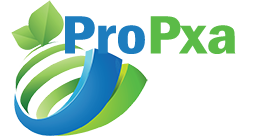How is a diet made to treat melasma and freckles created?
See a dermatologist for freckles and melasma as a first step.
To determine whether this illness is brought on by dietary deficits or impaired liver function, your doctor may prescribe blood testing.
Melasma can also develop as a negative drug interaction. Ask your primary care physician to confirm or rule out this.
Step 2: Choose foods high in folate because a deficiency in folic acid or folate can also result in melasma. Pregnant women and those who eat too little food may have low levels of this B vitamin. Green vegetables, whole grains, and citrus fruits are excellent providers of folic acid, often known as folate. Your doctor might also advise folic acid supplements.
Step 3: Monitor the copper mineral composition of the diet. Melasma may indicate that these minerals are present in excess. A surplus of copper can make skin appear overly dark because it aids in the production of melanin in the skin. If you are taking a multivitamin that contains copper, avoid taking this mineral on its own. Daily consumption of 900 milligrams of copper for adults, 1,000 milligrams for pregnant women, and 1,300 milligrams for nursing moms are all suggested. To reduce excess copper, eat foods high in iron and vitamin C or take a supplement containing these nutrients.
Step 4: Increase your intake of foods high in vitamins C and E. These anti-oxidant-rich foods aid in repairing skin melasma-causing sun damage. These vitamins can be found in citrus fruits, kiwis, nuts, almonds, vibrantly colored vegetables, and fish.
What foods can be consumed to treat melasma and freckles?
Consume fresh food instead of snacks, processed foods, manufactured foods, food coloring, chemical additives, artificial sweeteners, flavor enhancers, or other elements that aren’t thought of as being a part of a natural diet. Until then, eating natural, fresh, and nutrient-rich food is the best way to treat melasma.
Also, the Tri-Luma cream, which treats melasma exceptionally well, contains the ideal ratios of all three ingredients. Fresh foods include things like fruits, vegetables, entire grains, legumes, nuts, meat, fish, eggs, herbs, and spices. Bought food must also be manufactured using premium ingredients, be freshly prepared, and be self-processed.
Foods that induce inflammation should be avoided including junk food, fast food, processed foods, beverages, and products that are canned. Processing is possible for anything that comes out of a bag, can, box, jar, or bottle. Food that shouldn’t be consumed has all kinds of chemicals added to it to improve flavor or preserve it if it came from a factory.
Together with the fact that processed foods create inflammation, enhance pigmentation, and offer the body very little nourishment, drinking inflammatory beverages should be avoided. Thus, you shouldn’t consume soda, bottled juice, or rose water if you want to properly repair your body and skin from the inside out. In addition, you might be wondering what to eat to get rid of freckles or melasma. vitality, sweet tea, and staying away from alcohol and caffeine.
None of these drinks have any positive effects on the skin. If you want to consume something healthy in the interim, choose water, homemade herbal tea, or freshly squeezed vegetable juice.
Eat less of the potentially allergic or poorly digestible foods. Your body begins to produce inflammation after consuming potentially allergic or difficult-to-digest food, which can also result in hyperpigmentation. Hence, avoid suspected allergenic foods including peanuts, eggs, milk and dairy products, soy, and wheat gluten if you wish to eat something to treat melasma and freckles.
Cut back on carbohydrates Several people’s hormones can cause melasma and freckles. Consuming too many carbohydrates might lead to hormonal abnormalities and hyperpigmentation. If melasma develops during pregnancy, lactation, use of oral contraceptives, hormone replacement therapy, or gets worse at different times of the menstrual cycle, restricting carbohydrates in the diet may be helpful in treating it.
Following are a few examples of processed food types that are high in carbohydrates: Flour, sugar, and syrup; baked goods like cakes, bread, crackers, muffins, and cookies; pasta and noodles; chips and crisps; candy and desserts; cereal; soda or alcoholic beverages; fruit drinks; sweetened beverages (including, but not limited to, energy drinks; sweetened teas; and beverages); and sweet coffee.
You may wish to steer clear of the following new sources of high-carbohydrate foods: legumes (such chickpeas, lentils, black beans, pinto beans, and others), sweet fruits (mango, papaya, grapes, pineapple, etc.), and starchy vegetables (like potatoes, radishes, carrots, pumpkins, squash, sweet potatoes, and so on).










